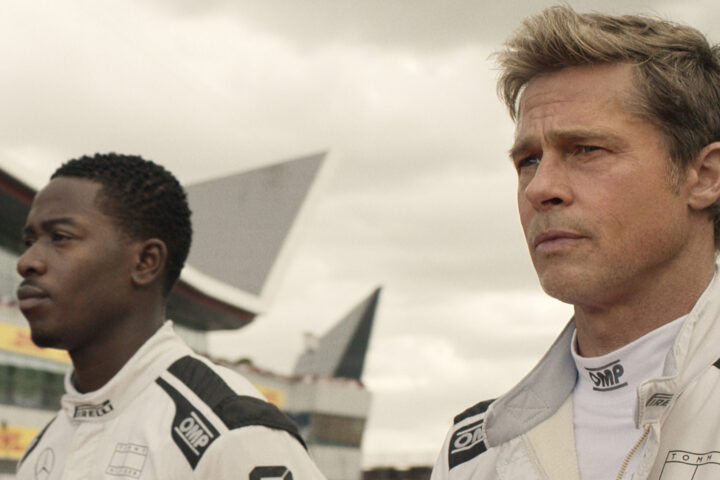Debra Granik’s heartbreaker Leave No Trace is an unorthodox father-daughter story about family, adolescence and community, emotionally potent all the way and with a lot of compassion for the values of rural folks and those who choose to live off-the-grid.
It is also a spare, moving document about life in America today, standing with The Rider as an essential drama about the importance of community and relationship to an environment, a sort of love letter to the American forests and its people and places where equilibrium can be achieved perhaps only by a close-to-the-Earth, collective consciousness.
Like her Ozark meth saga Winter’s Bone, Leave No Trace is cultural anthropology as drama and features a pure, breakout performance from its young star, Thomasin Harcourt McKenzie, whose face quivers with feeling opposite her emotionally wounded dad Ben Foster (believably against type). In some of their exchanges, I was reminded of a similarly affecting dynamic between Judd Hirsch and River Phoenix in Sidney Lumet’s fine 1988 radicals on the run picture Running on Empty.
2010’s Winter’s Bone proved Granik uncommonly observant in its objective unearthing of a hermetically sealed community of mountain folks living by their own codes of loyalty and retribution. In that picture Granik created a world unto itself, a tucked away corner of America so specific and authentic that for most viewers might as well have been the moon.
She creates another such world in Leave No Trace, where a father and daughter co-exist in the Pacific Northwest woods until an intervention forces their removal. It is a movie that eschews all sentiment and preachiness in its story of a family tested by societal dictates, a parent’s psychological scars and a teen’s growing need for an extended community. In its unique way, it’s classic coming-of-age material with a very specific lens.
Former war vet Will (Ben Foster) and thirteen-year-old daughter Tom (Thomasin Harcourt McKenzie) live in the woods near Portland, and the film’s opening third depicts their symbiosis and unique circumstances, which feel a bit more like a father-daughter bonding trip than an intentional withdrawl from contemporary society. They while away the days playing chess, running camouflage drills to avoid discovery, creating cooking flames by rubbing sticks and gathering rain for drinking.
To Granik’s credit as a writer (and she co-wrote the screenplay with Ann Rossellini from Peter Rock’s novel My Abandonment) their circumstances are not revealed in exposition, rather in scenes where they venture into Portland for supplies and to retrieve Will’s PTSD medicine, which he later attempts to sell to a homeless tent community. Granik makes it clear that Will and Tom are not homeless, just voluntary refugees driven by Will’s inability to function in the “real” world.
It turns out their home is in a large forest preserve, and soon they are discovered by the kinds of well-meaning social services workers who, in a lesser film, would be villainous. Granik presents these workers less as callous bureaucrats and more as sincere help that isn’t truly needed.
After a brief, painful separation and barrage of psychological tests, Will and Tom are relocated to a room in the home of a local rancher. To us, this seems like an upgrade, and while there is nothing overtly amiss with the new living situation—they’ve been given decent comforts and earn-your-keep labor for Will—for them, it is completely out of sync. And while they may still be in close proximity, but as local teens take a liking to Tom, who exerts tiny glimmers of independence, things begin to drift.
In their darkest moments, father assures daughter that “we can still think our own thoughts,” but his struggles with integration lead them, once again, into the woods. For Tom, it may be the last time.
The second half of the film amplifies the growing distance between father and daughter when an injured Will, unable to walk, requires medical assistance, which Tom seeks in a community of RV campers and modest living folks, a sort of forest colony of good, kind people who reveal a robust social group and support network Tom didn’t know existed.
The pair of performances at the heart of Leave No Trace are indelible characterizations by two fine actors. Cocksure character actor Foster possesses, at least initially, a fiery and protective drive. Later, there’s a growing resignation and quiet about him. He knows what’s happening—that his daughter is coming into her own—and he can’t stand in the way, especially when get can’t even stand.
Much like Lawrence in Winter’s Bone, Thomasin Harcourt McKenzie is a revelation here, an immediately empathetic young performer without a bone of “acting” in her body. Her moments alone late in the picture, where she bonds with a bee colony, a puppy and supportive local woman (well-played by Dale Dickey) display an ability to communicate, without melodrama, true emotions that have arrived at the surface. It is a performance of unguarded, mature tranquility.
Granik’s uncanny ability to depict overlooked American communities with understanding and insight is unequalled by her peers today, and she finds an exact right note on which to end Leave No Trace. The scene, which involves walking, talking and an overhead shot, is powerful and final. Rarely does a film ask the viewer to ruminate on potential futures for its characters with such poignancy.
One of the year’s best films.
4 stars.



